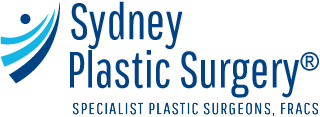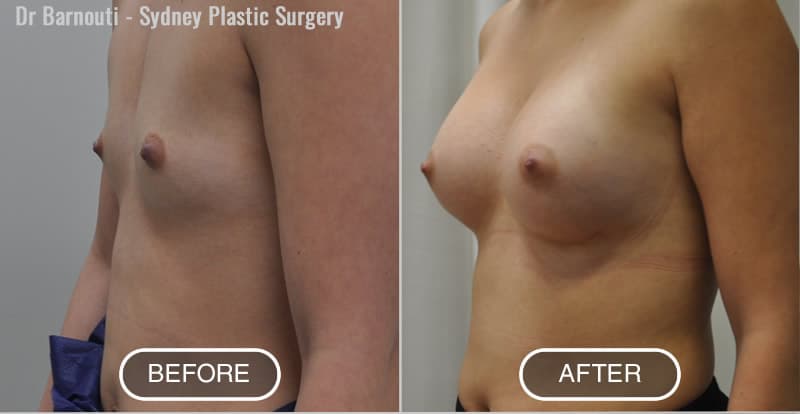Breast Augmentation Sydney
Breast augmentation is a procedure designed to increase breast volume, enhance symmetry, or restore fullness using implants. This surgery can be performed for cosmetic reasons or as part of reconstructive surgery, and it may be combined with a breast lift to address issues such as sagging (ptosis).
What to Expect at Your Consultation
You’re encouraged to bring a support person, such as your partner or a family member, to your consultation at our Sydney clinic.
Your medical history will be reviewed, including breastfeeding history, lifestyle, and future family plans.
A comprehensive breast assessment will be conducted, measuring:
- Nipple-to-crease distance
- Breast width (transverse diameter)
- Height and position of the inframammary fold
If you’re assessed as a suitable candidate, you’ll have the opportunity to trial different implant shapes and sizes. Please bring a sports bra to help you visualise the outcome.
Implant selection will be based on:
- Size and volume preferences
- Shape (round or anatomical/teardrop)
- Projection and implant placement (under or over the muscle)
We may also use computer simulation tools to help visualise potential results.
Procedure Overview
1. Marking for Implant Placement
The surgical site is marked pre-operatively to guide incision placement and ensure precise positioning.
2. Incision
A small 4 cm incision is made in one of the following areas:
- In the crease under the breast (inframammary)
- Around the areola
- In the armpit (transaxillary)
The most suitable incision type will be discussed with you in advance.
3. Creating the Implant Pocket
- The pocket is carefully created in one of the following planes:
- Sub-muscular (beneath the chest muscle)
- Sub-glandular (beneath breast tissue)
- Dual plane (partially beneath the muscle and gland)
Dr Barnouti often uses the dual-plane technique for its natural aesthetic outcomes and reduced risk of contracture.
4. Implant Insertion & Symmetry Check
The implant is inserted, and the patient is positioned upright under sedation to assess symmetry and implant positioning, taking into account the influence of gravity.
5. Wound Closure
Self-dissolving sutures are used to close the incision, eliminating the need for removal.
6. Compression Garment
A surgical bra or compression garment is fitted to reduce swelling and support the healing process.
The operation will take between one and two hours, depending on the complexity of the case.
Postoperative Care
Wound Care:
- Keep dressings clean and dry.
- Sponge bath only till your follow-up appointment 57 days after surgery
- Avoid submerging incisions in water (such as baths, swimming pools, or hot tubs) until they are fully healed. That is 6 weeks after surgery.
- Sutures are dissolvable and do not need to be removed.
- Keep a medical bra on you for 6 weeks
Activity:
- Rest and take it easy for the first few days after surgery
- No heavy lifting (greater than 5kg), straining or vigorous exercise for 6 weeks
- Gentle walking is encouraged to promote circulation and prevent blood clots
- Sleep on your back with your upper body slightly elevated for comfort and to reduce swelling
- Avoid driving while taking prescription pain medication
Medications:
- Take pain and antibiotic medications as prescribed
- Avoid aspirin, ibuprofen or any products containing them for 2 weeks after surgery unless otherwise instructed
- Resume any other regular medications you may be taking.
Garments:
- Wear a post-surgical bra for 6 weeks or until instructed otherwise
- You can remove the bra for 30-60 minutes a day for washing and drying.
- Avoid underwire bras for 6 weeks
When to Call:
- Fever
- Chills
- Increasing redness, swelling, bleeding or bruising around incisions
- Excessive pain not controlled by medication
- Discharge from incisions
Follow Up:
- Postop appointment 57 days after
- The final results are usually 6 weeks after surgery.


